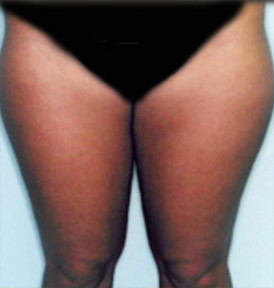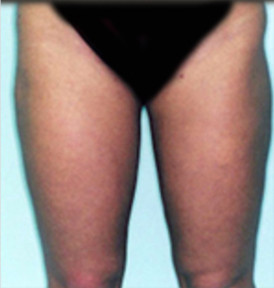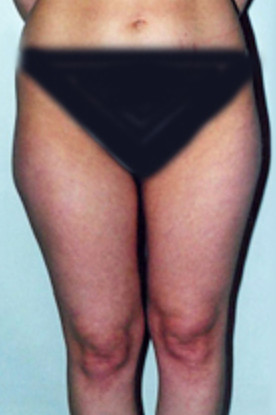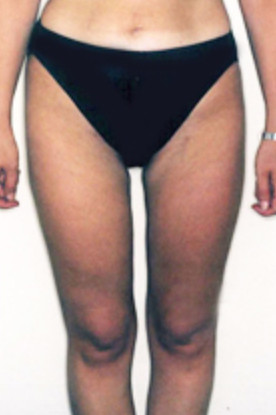Featured Liposuction Cases
 Before
Before After
After Before
Before After
After Before
Before After
AfterLiposuction
Liposuction is one of the most popular surgeries that I perform. In fact, it is one of the most popular surgeries in the country with more than 400,000 performed last year. Despite its appeal and popularity, paradoxically I think it is one of the least understood operations that we do. So, on this page, I will try to provide some clarity. I’ll explain the different types of lipo, including laser liposuction, and shed some light on this procedure. I’ll begin with the concept that the key to a good result is all about the skin, not about the fat.
What is Liposuction?
In its most simple and original form, liposuction involves a small metal tube that is placed under the skin. The tube is connected to a vacuum suction device, and as the tube is passed back and forth the vacuum literally sucks the fat out from underneath the skin. There are many styles of this tube, some that are larger, some that are smaller, and some that remove fat more or less aggressively. As a plastic surgeon, I use my judgment to pick the correct cannula (tube) for the job. A larger and more aggressive cannula may be used for large areas such as the abdomen or flanks, while a smaller cannula may be used for areas such as the chin or face. Liposuction is often called abdominoplasty.What is Tumescent Liposuction?
The first liposuction was just what I described above, but a dermatologist (yes, a dermatologist) came up with a great idea. He added a lot of fluid under the skin before proceeding with liposuction. This fluid, called tumescent fluid, had a number of benefits. The fluid contained a local anesthetic to minimize pain, and it included epinephrine to cause constriction of blood vessels to minimize bruising. The added fluid itself provided more hydration to patients, making recovery easier. Perhaps most importantly, the fluid made the target for liposuction larger. This made it less likely to take too much from any one area allowing a more even result. The composition of tumescent fluid has been well studied for safety. Some doctors use more or less depending on their preference. But the use of tumescent liposuction is the mainstay of all liposuction regardless of the device that is used to remove the fat.What Types of Liposuction Are There?
While there is always a new device being brought to market, there are three main types of liposuction:Standard Abdominoplasty
This is the metal cannula procedure described above. The energy to move the cannula is powered by your surgeon’s hand. I use this mainly for small liposuctions.Power-Assisted
This technology uses the same Idea as regular liposuction, but in power-assisted liposuction, the metal cannula is connected to a device that makes it reciprocate (go in and out) very quickly. This reciprocating motion makes it easier to move the cannula through the tissues and removes fat quicker. I personally like and use power-assisted liposuction frequently. I like the way it feels and the uniform results it gives.Energy Source Liposuction
Ultrasonic liposuction and laser liposuction both send energy into the fat to help break it up. Ultrasonic liposuction uses hi frequency sound waves, while laser lipo uses light energy. These are very different technologies, but the end result is similar. The initial promise of these devices was that they would not only remove the fat, but that they would cause the skin to shrink up as well. While I believe that in the right hands they remove fat well, the skin tightening has not been born out. Because they use increased energy, there can be a higher risk of seroma (fluid collections under the skin) and burns to the skin.External Liposuction
Anything external is not truly liposuction, but there are a few devices that attempt to remove fat in a noninvasive way. Some use ultrasound waves, and some use freezing. I personally feel that they are lackluster at best, but they might be right for the patient that just doesn’t want a surgical procedure. It is important to modify expectations. These devices take longer and do less.Risks & Recovery for Abdominoplasty
Like any medical procedure, liposuction brings with it some risks. Many of these are minor and less so when your surgeon is experienced. Common liposuction risks include:- Bleeding
- Bruising
- Infection
- Swelling
Am I a Candidate for Liposuction?
This goes back to the concept I proposed in the first paragraph. Liposuction is about the skin, not about the fat. The fat removal is the easy part and there is almost no area I cannot remove fat from, but the skin is a different story. If a patient has good, tight skin and fat is removed from underneath, then the skin will shrink up nicely and the patient will be happy. But if the skin is loose and fat is removed, the patient may be skinnier, but the skin will look dimpled wavy and irregular. The paradox of abdominoplasty is that the results are best in younger patients who have the best skin elasticity. These are the patients who should need it the least! Even in the best situations, I express to my patients that they will always pinch something. Liposuction does not remove all the fat (it wouldn’t look normal) and liposuction, by definition, removes no skin.Good, Moderate, or Poor
When I evaluate my patients for liposuction, I place the areas of concern in three groups:- Good skin tone — low likelihood of irregularities
- Moderate skin tone – can proceed to liposuction but must be more tolerant of the possibility or dimpling or waving
- Poor skin tone – these patients may wish to consider skin tightening procedures, such as tummy tuck, thigh lift or back excision because the skin is so loose

 Welcome to my new and updated website. I hope you find it not only better than my old one, but different from the many others you may be looking at.
Welcome to my new and updated website. I hope you find it not only better than my old one, but different from the many others you may be looking at.